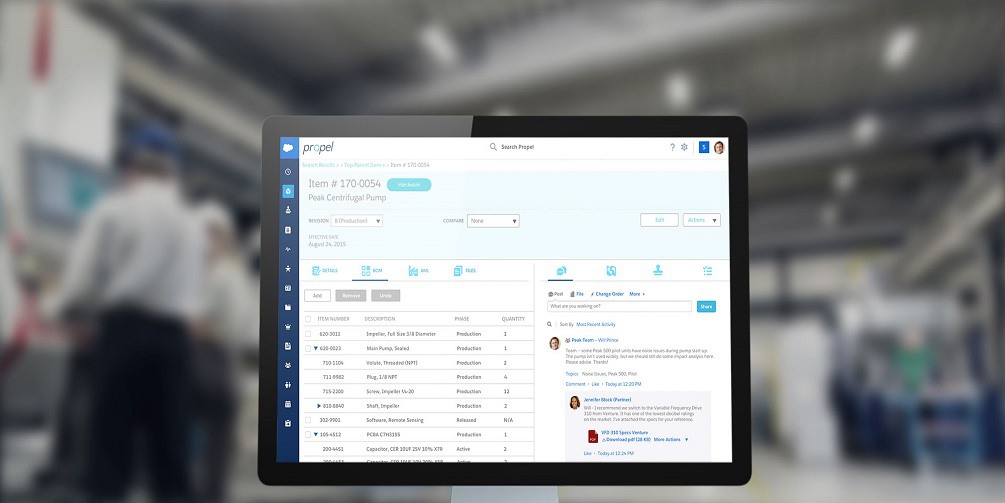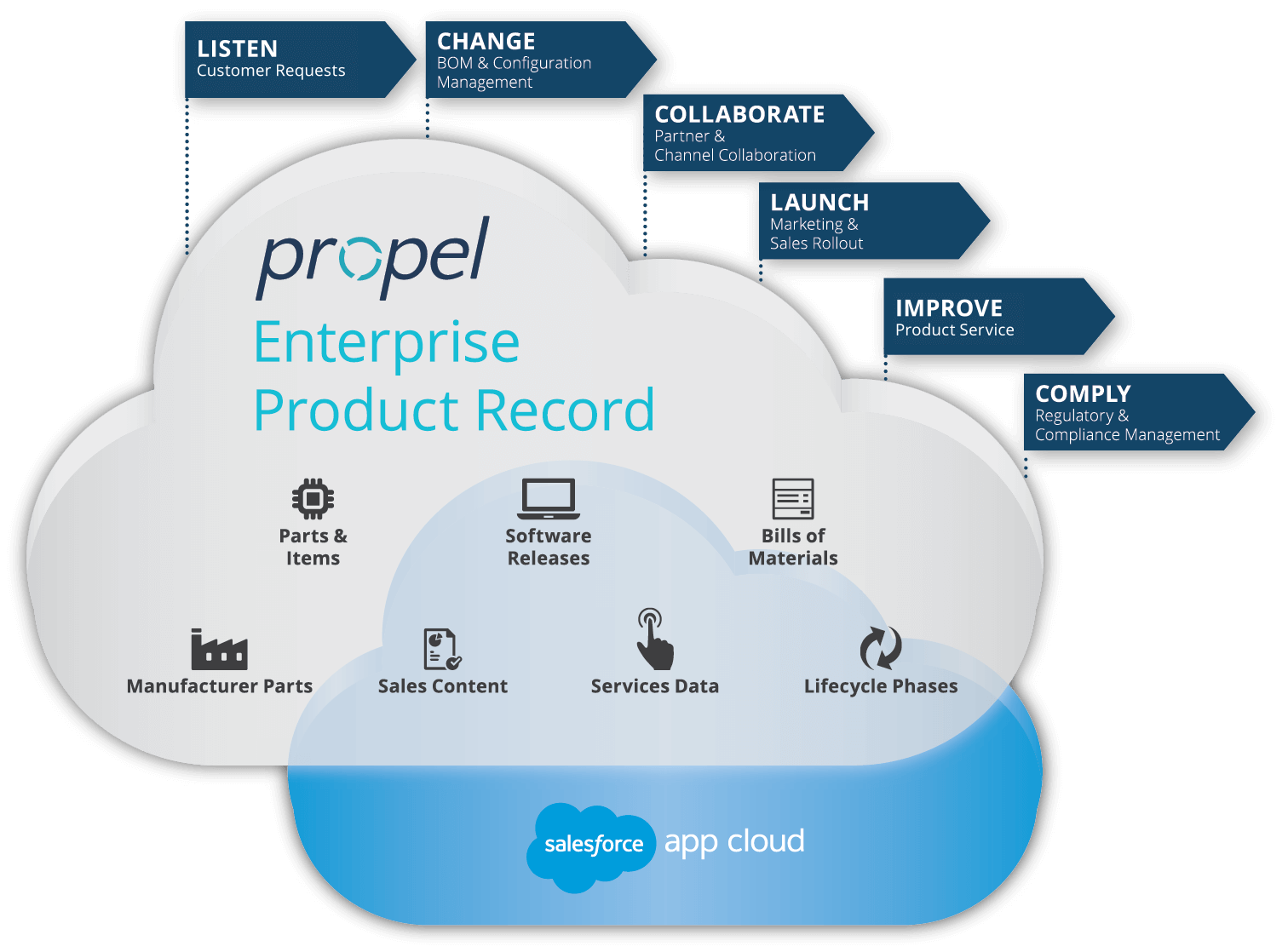Propel is a cloud software company that delivers innovative Product Lifecycle Management (PLM) software. Propel helps everyone work together and deliver the perfect product for each customer. They do this by allowing people to collaborate and share all the information that defines products as they’re getting developed, launched, sold and serviced. Some of the data they help manage are bills of materials, tasks and activities, files, sales collateral, pricing and service data. Below is our interview with Miguel Tam, VP of Marketing at Propel:

Q: Who are the primary users of Propel software solutions and what are some of the key challenges you are helping them solve?
A: Propel’s users are anyone who gets involved with product development and launch – engineering, operations, sales, marketing, partners and customers. Some of the biggest challenges they face is getting access to the latest product updates. Many companies have used Product Lifecycle Management (PLM) software for years, but it’s been focused primarily on helping engineers. Companies are looking for a way to get sales, marketing and other groups more involved earlier in the design process. The same goes with customers. They’re instrumental in shaping product decisions. And because product development and launch involves so many globally dispersed teams, you also need a solution that anyone inside or outside your organization can get the information they need.
 Recommended: Anderson Direct & Digital Helps You Maximize ROI Through The Integration Of On-And-Offline Strategies
Recommended: Anderson Direct & Digital Helps You Maximize ROI Through The Integration Of On-And-Offline Strategies
Q: What customers are using Propel today?
A: Our customers span from young innovative companies to the Fortune 500. All of them are using Propel to help with their product launches, and many of them are seeing a growing trend to create very individualized products for their customers. One example is AMS Technologies, a solution provider of high-tech components, systems and equipment, with over 2000 customers across Europe. They recently won the 2016 Salesforce Manufacturing Innovation Award because their engineers, suppliers and contract manufacturers are now using the cloud to work more closely with customers to develop the exact products they need. Having customers be engaged and iterate throughout the development process was never feasible for many companies before.
Q: PLM has been very competitive for years. How does Propel differentiate itself?
A: Propel is extending the traditional concept of PLM to people outside of engineering. While it’s valuable to have engineers collaborate on the next generation of products, Propel’s cloud PLM software also helps sales, marketing, and partners make those products a success in the marketplace. And by tying customer information with product information, companies can now engage directly with customers during development, get better visibility into customer issues in the field, and understand the impact of design changes on their customers.
 Recommended: TenantCloud Plans To Create Free Cloud Service For Landlords and ServicePros
Recommended: TenantCloud Plans To Create Free Cloud Service For Landlords and ServicePros
Q: You’ve recently announced the latest release of your Propel PLM Suite. What are the main improvements?
A: Propel’s latest release introduces even easier ways for customers and sales to capture, collaborate and deliver customer requests. Tighter integration between Propel and Salesforce CRM allows customers and salespersons to capture customer-specific requirements as part of a sales opportunity, and then easily share that information with engineers and operations so they can have those requirements under change control. Threaded discussions also make it easy for everyone to stay on the same page regarding changing requirements and designs.
Q: What are your plans for 2017?
A: Our emphasis for 2017 is continuing to extend the traditional concept of PLM. We want to make it even easier for sales, marketing and customers to deliver products to market. For example, during a product launch, it’s critical for sales, marketing and channels to share, update and approve pricing, product attributes and sales collateral, especially if engineering is changing product features. While engineers have had systems to manage changes to product designs, the same hasn’t been the case for customer-facing teams.
Activate Social Media:


